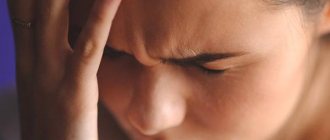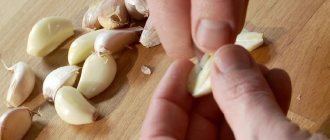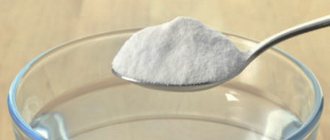| Home >>> Medicines for parasites |
Antiparasitic drugs, based on their origin, are conventionally divided into synthetic, herbal and homeopathic.
Synthetic chemicals . Medicines in this group provide quick results, but they themselves have a pronounced toxic effect. The action of synthetic agents is based on the destruction of a narrow range of parasites, so they are prescribed for the treatment of a specific type of invasion. Chemical drugs have many side effects and contraindications. Therefore, they should not be taken without a doctor's prescription.
Vegetable . Medicines in this category are herbal based and contain herbal preparations or plant extracts. The effectiveness of such products is usually lower than chemical drugs, but they are absolutely safe and do not cause side effects. In addition, they can be prescribed for preventive purposes.
This group also includes traditional medicine and parapharmaceuticals.
Homeopathic . Medicines in this group also have a herbal basis, and with the right regimen, you can achieve excellent results. Homeopathic medicines can be prescribed to prevent infections because they are safe and have no side effects.
Let's take a closer look at all these groups.
Tablets for nematodes and roundworms
The most common parasites in the human body are roundworms and pinworms. Less common are nematodes such as whipworm, Toxocara and Trichinella.
To expel nematodes parasitizing in the intestines, the following drugs are used:
- Albendazole (Vormil, Nemozol, Gelmodol-VM) - cost from 120 to 150 rubles;
- Decaris (Levamisole) – cost from 70 to 90 rubles;
- Mebendazole (Vero-Mebendazole, Thermox, Vermox, Vermakar, Vormin, Mebex) - cost from 20 to 90 rubles;
- Piperazine - offered by pharmacy chains for 10-30 rubles;
- Pyrantel pamoate (Nemotsid, Pyrantel, Helmintox, Kombantrin) - cost from 30 to 130 rubles;
- Carbendacim (Medamin).
To expel nematodes parasitizing outside the gastrointestinal tract, Diethylcarbamazine (Ditrazine citrate) and Ivermectin (Ivermec, Ivomec) are used.
How to take antiparasitic drugs correctly? The eggs and larvae of most helminths are well protected from the toxic effects of drugs. Adults die from their action, so the next cycle of development of larvae and eggs can lead to self-infection of the patient. This feature of parasitic infestations makes it necessary to repeat the course of treatment several times. An enema with herbal decoctions or taking a laxative to completely remove helminths can supplement the effects of medications.
Self-medication with antiparasitic drugs is completely unacceptable! The toxicity of drugs requires accurately calculating the dose, based on the patient’s body weight, and conducting maintenance therapy. Expulsion of tape and flat parasites should be carried out only in a hospital setting. When self-medicating, it is impossible to check whether the drugs were effective or whether a repeat course is required.
Symptoms and signs of infection
In order to quickly and effectively cope with parasites that have settled in the body, folk remedies alone cannot be used, you need to use modern medications. How do you know that the human body has been attacked by helminths? There are several signs indicating this:
- Constipation. Penetrating into the digestive organs, worms block their work, preventing the digestion of food and the normal movement of feces.
- Diarrhea. During their life, worms produce substances that accelerate bowel movements.
- Flatulence. It is caused by inflammatory processes in the digestive system and requires timely treatment.
- Allergy. It can manifest itself into anything, even if the person has not suffered from it before.
- Skin problems. The presence of worms in the body leads to metabolic disorders.
- Excess weight. Caused by a drop in sugar levels, which leads to a constant feeling of hunger and excess weight.
If these signs are present separately or in combination, and begin to appear regularly, this means that prevention against parasites in the human body is urgently needed and it’s time to take pills. Which ones exactly? Let's try to figure this issue out together.
Treatment of the body against parasites with drugs
Modern drugs are very diverse; they are able to destroy helminths in a short period of time without causing harm to the human body. Each of them affects only one type of worm and before starting treatment, it is very important to find out which one is parasitizing you. Specific preventative medications are effective for each type.
Reasons for using medications may include:
- Previous illness. If there is a risk that not all parasites have died.
- When a family member is infected.
- There is a suspicion of a disease, but tests do not show this due to the small number of parasites.
- If there are animals in the house that roam freely on the street.
- Constant work with the earth.
- Traveling to disadvantaged countries.
Prevention methods should not be used during pregnancy, menopause, or long-term gastrointestinal disorders.
It should also be taken into account that taking medications without consulting a doctor may lead to undesirable results.
Tablets for parasites: cestodes and tapeworms
Cestodes cause a large number of helminthiasis - echinococcosis, sparganosis, cysticercosis and taeniasis (caused by the pork tapeworm), teniarinhoz, dipylidiasis, taeniasis (caused by the bovine tapeworm), alveococcosis, hymenolepiasis (caused by the dwarf tapeworm), coenurosis, diphyllobothriasis (caused by the broad tapeworm).
Preparations for expelling cestodes:
- Niclosamide (Fenasal) – used against tapeworms that parasitize the intestines;
- Mepacrine (Akrikhin) - used against all types of tapeworms, Giardia, for the treatment of malaria, cutaneous leishmaniasis;
- Albendazole (Nemozol) - used against all types of nematodes, mixed parasitic infections, cestodes living outside the gastrointestinal tract.
Broad-spectrum anthelmintic drugs for humans
Worm infestation is a very common disease, especially in childhood. It is worth treating human helminths taking into account the specific type of parasite. Often there are worms such as:
- roundworms;
- protozoa;
- echinococcus;
- pinworms;
- fluke;
- tapeworms;
- wide tapeworm;
- alveococcus
Broad-spectrum antiparasitic drugs for humans:
- Helminthox. Contains pyrantel embonate, which is considered an effective anthelmintic against pinworms and roundworms.
- Albendazole is an antihelminthic drug. It is recommended to use this remedy for the treatment of mixed helminthiases.
- Pyrantel is prescribed to patients who have been diagnosed with roundworms, kylostomiasis or enterobiasis.
- Decaris are popular anti-parasite tablets that contain levamisole. The drug is effective for necatoriasis and unspecified hookworm.
Preparations for nematodes
Before cleaning the intestines with an anthelmintic drug, it is recommended to consult a doctor. If symptoms of nematode infection are detected, you should immediately undergo an examination to confirm the diagnosis and identify the specific type of parasite. The following medications effectively remove nematodes from the human body:
- Levamisole;
- Wormil;
- Piperazine;
- Pyrantel;
- Bethenium hydroxynaphthoate;
- Ivermectin;
- Vero-Mebendazole.
Tablets for tapeworms
Another group of parasites that are found in humans are cestodes (tapeworms). These include diagnoses such as teniarhynchosis, coenurosis, dipylidiasis, and helminths - bovine tapeworm, broad tapeworm and others. Preparations for parasites of this group:
- Niclosamide;
- Mepacrine;
- Akrikhin;
- Fenasal;
- Albendazole;
- Nemozol.
Treatment of flatworms
A very large group of parasites, including many different species, are flatworms. This includes the following diseases from them:
- opisthorchiasis;
- fascioliasis (liver fluke);
- clonorchiasis;
- dicroceliosis;
- paragonimiasis;
- Watsoniosis;
- heterophyosis;
- dicroceliosis.
Preparations for parasites of this group:
- For extraintestinal invasion: Bithionol, Chloxyl.
- Against intestinal worms - Perchlorethylene.
- Broad-spectrum antiparasitic tablets: Cesol, Azinox, Biltricid.
Tablets for fluke helminths, trematodes, flatworms
Trematodes cause a large number of helminthiasis - clonorchiasis (Chinese fluke), opisthorchiasis (cat fluke), watsoniosis (liver fluke), cercariasis, metagonimiasis, schistosomiasis, fascioliasis (liver fluke), paragonimiasis (pulmonary fluke), gastrodiscoidosis, methorchiasis, eurythremosis, dicroceliosis ( lanceolate fluke), heterophyosis, fasciolopsidosis.
Anti-trematode medications:
- Perchlorethylene – used against intestinal flukes;
- Bithionol, Chloxin - used against trematodes that parasitize outside the gastrointestinal tract;
- Praziquantel (Cysticide, Biltricide, Cesol, Azinox) - have a wide range of applications and are used against many types of parasites.
Should I take anti-parasite pills for prevention?
If parasites are found in one family member, then other people living with the patient in the same area must also undergo treatment for parasites. Since children of preschool age are very often infected with helminths, and these parasites are transmitted very easily and quickly, parents have a completely logical question as to whether a preventive antiparasitic course should be implemented at a certain time interval. Another argument that parents give in favor of prophylaxis with antiparasitic drugs is the frequency of false negative results when performing scrapings to detect helminthiasis.
Experts have not yet reached a consensus on this issue. Some scientists believe that prevention is not practical. They indicate that a person takes the drug today and becomes infected again tomorrow.
Doctors clearly indicate that measures must be taken to prevent parasitic infestation:
- Strict personal hygiene;
- Washing your hands after a walk, before eating, after visiting the toilet and other public places;
- Daily change of underwear (preferably in the morning).
If you follow the above recommendations, then, according to experts, prophylactic pills against parasites are not necessary. In addition, they all have a toxic effect on the body, which means they will negatively affect the child’s health. However, doctors do not oppose parasite prevention such as eating pumpkin seeds or using other folk recipes using garlic.
There is also an opposite point of view. A number of experts insist that every six months the child should receive a preventive course of anthelmintic drugs (Pyrantel). They explain this need by the fact that the prevalence of pinworms in all preschool institutions is wide, and the reliability of diagnostic methods is low. In addition, children are only able to observe the rules of personal hygiene more or less fully until they are 4-6 years old.
If the analysis does not reveal the presence of parasites in the child’s intestines, but he is haunted by nighttime itching in the anus, periodic abdominal pain and nausea occur, then the scraping should be repeated exactly in the morning when the nighttime itching was especially intense. The analysis must be performed at least 3 times, every other day and after 14 days. Only in this case can one hope to obtain a reliable result.
Preventive use of drugs against parasites is possible for the following indications:
- Frequent contact with soil (playing in a sandbox, or living in a rural area);
- Availability of pets;
- Accommodation of a child in shelters and orphanages;
- Frequent trips to exotic coasts;
- Hobbies include hunting, fishing, beach volleyball or football, etc.
Remedies for head lice
No one is immune from the occurrence of this disease. Pediculosis occurs especially often in children due to frequent contact with a large number of people in preschool institutions and schools. Pharmaceutical companies are constantly developing new products that help remove lice and get rid of nits at home. Before using a specific product, it is worth considering contraindications. A list of the most popular drugs for parasites of this type is presented below:
- Medifox is a concentrated composition for external use. The main active ingredient in it is permethrin (a potent insecticide). The price of the product is about 120 rubles. Before using the composition, take into account the fact that it is highly toxic, so it must be used in strict accordance with the instructions. You should not buy this product to treat head lice in a child.
- Nyuda is one of the safest means for the medicinal treatment of lice and nits, so even small children are allowed to use it. Available in the form of a non-toxic spray. The composition contains dimethicone, which envelops parasites, as a result of which they die from asphyxia. The spray costs about 500 rubles; after using the product, it is important to comb out dead parasites from your hair using a comb.
- Medilis-Super is an effective drug against parasites and nits. This remedy helps well against head lice even in cases where other tablets and shampoos do not bring the desired result. The drug is available in the form of an emulsion, which is diluted with water. The price of the product is about 120 rubles.
- Pedilin is a special shampoo for removing lice and nits. The product contains the insecticides tetramethrin and malathion. Before using the composition, read the recommendations on the packaging to reduce the risk of side effects, because the composition is very toxic. Shampoo costs about 300 rubles.
Anti-parasite medications during pregnancy
Parasites most often affect the body of a person with a weakened immune system. The period of waiting for a child is a huge burden for a woman, and helminthiases often target their body. Drugs against parasites have a teratogenic effect, so they should not be used in the 1st trimester of pregnancy. The harm from the activity of helminths turns out to be less pronounced than the side effects of this group of drugs.
The only approved drug is Piperazine, which is used only as prescribed by a doctor.
Piperazine dosage:
- Treatment of ascariasis - 1.5-2 g 2 times a day for two days in a row;
- Treatment of enterobiasis - 1.5-2 g for 5 days, after a 7-day break the course is repeated.
You can avoid the toxic effects of drugs in the treatment of enterobiasis if you carefully observe personal hygiene and treat underwear with steam or boiling water.
Rules of personal hygiene - prevention of self-infection:
- Disinfection of hands after using the toilet and changing underwear;
- Thorough hand washing before eating and after contact with animals;
- Processing and washing vegetables and fruits, herbs.
Preparations for the treatment of protozoa
In medical practice, there are parasites of another large group - protozoa. To prevent the development of invasion, there are special preparations in the form of suppositories, drops or tablets. A doctor should prescribe medicine for parasites in the human body, because protozoa can affect different organs. Cleansing the body of helminths should be carried out strictly according to the instructions that come with the tablets.
This group of parasites includes:
- Giardia;
- amoeba;
- toxoplasma;
- balantidia;
- malarial plasmodium.
Effective drugs against parasites of this group:
- Metronidazole - acts by inhibiting the production of nucleic acids by the body of worms. Effective against Giardia, Amoeba and Trichomonas.
- Delagil is an effective remedy that can cleanse the body of malaria worms and amoebas. It is allowed to take the drug to prevent invasion.
- Quinidine is another effective medicine that is considered toxic, but has a good anthelmintic effect.
- Primaquine is a synthetic aminoquinoline, which is prescribed according to indications after a complete examination and blood tests.
Anti-parasite tablets for children and adults
Dekaris
The substance used to fight parasites in Dekaris is levamisole. The drug has an anthelmintic and immunomodulatory effect. It should be prescribed with caution in childhood, and in a dosage of 150 mg Dekaris is completely prohibited for children.
Indications: infection with pinworms, roundworms, necator, hookworm, intestinal eel, whipworm, toxoplasmosis, trichostrongylosis.
Decaris is not prescribed to children under 3 years of age, women during lactation, or patients with drug-induced agranulocytosis.
Dosage:
- Adults take a single dose of 150 mg.
- Children from 10 to 20 kg aged 3 to 6 years are prescribed 0.5 or a whole tablet of 50 mg.
- Children weighing from 20 to 30 kg are prescribed 1 or 1.5 tablets of 50 mg. The child's age is from 6 to 10 years.
- Children weighing from 30 to 40 kg are prescribed 1.5 - 2 tablets of 50 mg once. The child's age is from 10 to 14 years.
Decaris should be taken after meals with water. A repeat course can be carried out after 14 days.
After taking the drug, side effects may occur, including: sleep disturbances, dyspeptic disorders, headaches, dizziness, convulsions, and a feeling of your own heartbeat. After 14-35 days from taking the drug, encephalopathy and allergic reactions may develop.
Helmintox, Pyrantel (base – Pyrantel)
The drug is prescribed for necatoriasis, ascariasis, hookworm disease, enterobiasis, trichuriasis. Pyrantel can be used to treat ascariasis and enterobiasis in childhood.
Dosage:
- 120 mg for ages 0.5 – 2 years;
- 250 mg for ages 2 – 6 years;
- 500 mg for ages 6-12 years;
- 750 mg for adults;
- 1 g for those whose weight exceeds 75 kg.
The calculation is based on 10 mg/kg. Pirantel should be taken once a day, in the morning, immediately after breakfast.
After 2-3 weeks the course should be repeated. If a patient is diagnosed with mixed parasitic infestation, he is prescribed the drug for three days at a dosage of 10 mg/kg/day or 20 mg/kg/day.
Side effects from taking Pirantel: digestive disorders, loss of appetite, skin reactions (urticaria and rash), neurological disorders (headaches, hallucinations, sleep disturbances, hearing impairment, confusion, paresthesia), increased body temperature.
Pyrantel is contraindicated for use in case of hypersensitivity to the components of the drug, with myasthenia gravis; it should be taken with caution in case of liver failure. In tablet form, Pirantel is not prescribed to children under three years of age.
Wormin and Vermox
The active ingredient in these drugs is mebendazole. The drugs are prescribed for nematodiasis, ascariasis, hookworm disease, trichuriasis, trichinosis, taeniasis, and mixed helminthiasis. The drugs are prescribed to patients with echinococcosis if surgery is not possible.
Taking mebendazole is contraindicated for ulcerative colitis, Crohn's disease, liver failure, during pregnancy and breastfeeding, and under the age of 3 years. Mebendazole should not be combined with phenytoin, metronidazole, ritonavir, or carbamazepine.
Dosage:
- Adults and children over 3 years of age are prescribed the drug once a day at a dosage of 100 mg to get rid of enterobiasis.
- Adults and children over 3 years of age are prescribed the drug 2 times a day at a dosage of 100 mg to get rid of mixed helminthiases. The course of treatment is 3 days.
- For the treatment of echinococcosis, adults and children over 14 years of age are prescribed 500 mg of the drug twice a day for three days. Then 500 mg three times a day for another three days, followed by 1000-1500 mg three times a day for another three days. The duration of the course can be up to 6 weeks, and sometimes up to 2 years.
- For the treatment of trichinosis, 300 mg of the drug is prescribed three times on the first day, 300 mg 4 times a day on the second day, and 500 mg three times a day from days 3 to 14.
- The whole family should undergo therapy. For 3 days you need to take 100 mg of the drug in the morning and evening.
Side effects: allergies, neutropenia, dyspeptic disorders, glomerulonephritis, hair loss.
Classification of parasites
Depending on the place of parasitism and biological characteristics, helminths are divided into different types.
Biological types of parasites:
- Roundworms (nematodes) are distinguished by their rounded body shape when cut open. The most common type of parasites that live and undergo all stages of development only in the human body. Among the 24,000 species of these helminths, the most common are the following:
Nematodes are the most common type of parasites
- Roundworms reach a length of 45 cm. They live in the small intestine and feed on leftover food. They poison the body by releasing toxins into the blood. They live up to 14 months. The route of infection is unwashed hands and food.
- Pinworms - do not exceed 1 cm in length. They live in the large and small intestines. They are very easy to become infected through contact with a carrier, through household items. They live 1–2 months. If hygiene is observed, helminths of this type are easy to get rid of.
- Whipworms are 3–4 cm long worms that burrow into the mucous membrane of the cecum and colon. They suck blood. In the process of life, many toxins are released. They live up to 5 years. The route of infection is through unwashed hands and food.
- Trichina - reaches only 3–4 mm in length. These helminths can be localized in any organs. They penetrate the striated muscles of the respiratory tract, eyes, and heart. They live for several years. You can become infected through raw pork.
The first 3 types of helminths are effectively treated with medications. It is enough to take the appropriate medications. Trichinosis is treated in stages: only adult worms are destroyed with medications; larvae that are localized in the muscles cannot be killed.
- Tapeworms (cestodes) - they have a flat-shaped body, divided into segments. They have suction cups with which they are attached to the intestinal mucosa. Can reach 18 m in length. One stage of life necessarily takes place in the body of an intermediate host. The most common types of helminths in this group:
More on the topic: Black walnut for parasites
The tapeworm is common and one of the longest running parasites
- Bovine tapeworm - reaches a length of up to 10 m. It lives in the intestines, attached to its wall. You can become infected through unprocessed beef.
- Pork tapeworm - reaches 2 m in length. You can become infected through raw pork.
- Dwarf tapeworm reaches a length of 3–5 cm and is transmitted through household means, through unwashed hands.
- Wide tapeworm - reaches 6–15 m in length. You can become infected through the meat of freshwater fish if you eat it raw.
- Echinococcus is a dangerous helminth that can be contracted from cats and dogs. Once in the human body, the larvae develop quickly, spread through the bloodstream to different organs and form echinococcal cysts, which can only be removed surgically.
- Trematodes (flukes) - their flat and wide body can reach a length of 1.5 m. The route of infection is through unprocessed fish meat and seafood. They can be localized in any part of the body: from the middle ear, eyes to the excretory ducts of the glands. They feed on epithelial cells, intestinal contents, mucus, and suck blood. Main types of flukes:
Trematodes can settle in any part of the body
- Fasciola – grows up to 3–7 cm and parasitizes the gall bladder. You can become infected by consuming aquatic plants or unboiled water.
- Siberian fluke - reaches 4–13 cm in length and is localized in the gall bladders and ducts.
Depending on the place of parasitism, helminths are divided into:
- intestinal - develop and live exclusively in the intestines;
- extraintestinal - through blood vessels they spread to various organs: from the eyes and brain to the liver.
Types of parasites, depending on their developmental characteristics:
- Biohelminths - to develop, parasites of this group need to change several intermediate hosts. They can be contracted from animals.
- Geohelminths must necessarily go through the stage of maturation in the soil, otherwise they cannot infect humans.
- Contagious species - the entire development cycle can take place in the human body.
. The most common types of helminths that are found in Russia are roundworms, pinworms, broad tapeworm, trichinella, dwarf tapeworm, pork tapeworm, liver fluke.
Symptoms of parasites in the body:
- Grinding of teeth in sleep.
- Problems with the gastrointestinal tract - diarrhea, constipation, flatulence.
- Pain in muscles, joints.
- Fever.
- Dermatological diseases - eczema, rash, acne.
- Allergic reactions.
- Anemia.
- Weight problems – obesity or sudden weight loss.
- Sleep disorders.
- Nervous disorders.
- Chronic fatigue syndrome.
- Respiratory tract diseases – asthma, cough.
- Immune disorders.
- Swelling of the body, face.
Signs that indicate the presence of parasites appear after infection 2-4 weeks later.
A sharp change in weight (in any direction) may indicate the appearance of worms










